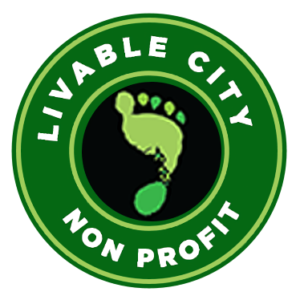Poets Plaza, a proposed piazza in North Beach, has been delayed again. Supporters have started an online petition to get the project moving. There will be a public meeting about the piazza on Thursday, March 3 from 6 to 7:30 pm at the Tel-Hi Center, 660 Lombard Street near Mason.

The plaza, also called Piazza Saint Francis, would reside on the block of Vallejo Street between Grant and Columbus avenues, in front of St. Francis of Assisi Church. Lawrence Ferlinghetti, poet and owner of City Lights Books, first proposed Poet’s Plaza in 1998. “I viewed this plaza as a great public space where writers of all generations and nationalities could come and recite their works (with quotes from great poets incised in the paving stone) — a plaza that would become the active literary center of the city.”
Former City supervisor Angela Alioto is the project’s energetic proponent, and the current design envisions a pedestrian plaza reminiscent of Umbria, an Italian region of hill towns that St. Francis called home – paved in bands of stone incised with lines of poetry, with a fountain, benches, and olive trees.
Ferlinghetti also championed improvement of Jack Kerouac Alley next to City Lights Books. The alleyway connects Chinatown and North Beach. It was remodeled and closed to autos in 2007, and its new paving is inset with lines of poetry in English and Chinese.
Ferlinghetti wrote: “Inner cities around the country are learning tardily that they do not have to allow the automobile and its car culture to overrun them.” Projects like Poets Plaza and Jack Kerouac Alley are part of a larger, worldwide movement to reclaim city streets for people. Hundreds of streets across the Americas, Asia, and Europe have become car-free. Car-free streets may be temporary or permanent.
San Franciscans have enthusiastically embraced temporary car-free streets. Portions the roads through Golden Gate Park are car-free every Saturday and Sunday. Starting in 2008 with two events, Sunday Streets has grown to eight annual events that attract tens of thousands of San Franciscans. San Francisco’s street fairs and festivals are a longstanding tradition. Neighbors organize block parties and play streets, and Livable City is working to make the process easier.
San Francisco, like many US cities, has been slow to embrace permanent car-free streets, despite many successful examples around the world, and home-grown successes like Jack Kerouac Alley, Mint Plaza, Maiden Lane, and the City’s wonderful staircase streets. Part of the problem is the lingering notion in planning circles that car-free streets don’t work. In the 1950s and 60s, many American downtowns, large and small, were facing a crisis as the advent of television and the automobile brought about a decline in downtown shopping and theater districts. Several cities experimented with pedestrianizing shopping streets. Pedestrianized streets often continued their decline, and pedestrianization was blamed for making it worse. By the 1970s and 80s many American planners concluded that pedestrian precincts don’t work, and auto traffic to many car-free streets.

Urbanists like Jan Gehl and the late John Roberts identified the necessary ingredients of successful city-center car-free streets. Strong character, including great buildings and historic neighborhoods, draws people. A mix of uses and activities – housing, offices, restaurants, bars and cafes, shops, hotels, entertainment, and cultural institutions – creates activity throughout the day and into the night, making streets lively and safe. Sustainable transportation options – public transit, a bicycle network, and a network of walkable streets – provide mobility. Streets and plazas should be well-designed and maintained. Blocks should be short and streets well-connected. Human-scaled buildings are important – buildings tall enough and close enough to create a sense of snugness and enclosure, but not so tall as to put public spaces in permanent shade. In cool and windy San Francisco, sunlight on sidewalks and in parks keeps them comfortable and inviting.
Many San Francisco streets have all the right ingredients to be successful car-free streets – a mix of uses, a strong character, good transit, and human-scaled buildings. North Beach is well-suited to car-free streets – Poet’s Plaza, and also Grant Avenue, as Ferlinghetti and others have noted. As Ferlinghetti said in his inaugural address as Poet Laureate of San Francisco, auto traffic can destroy the poetry of the city. Car-free streets can help us hear it again.




